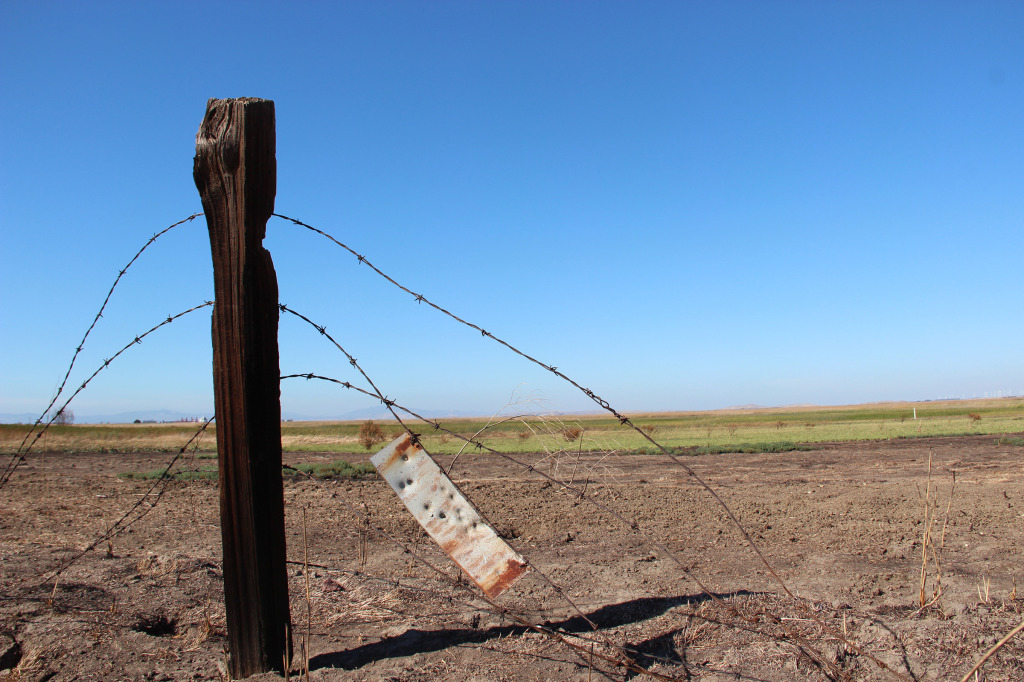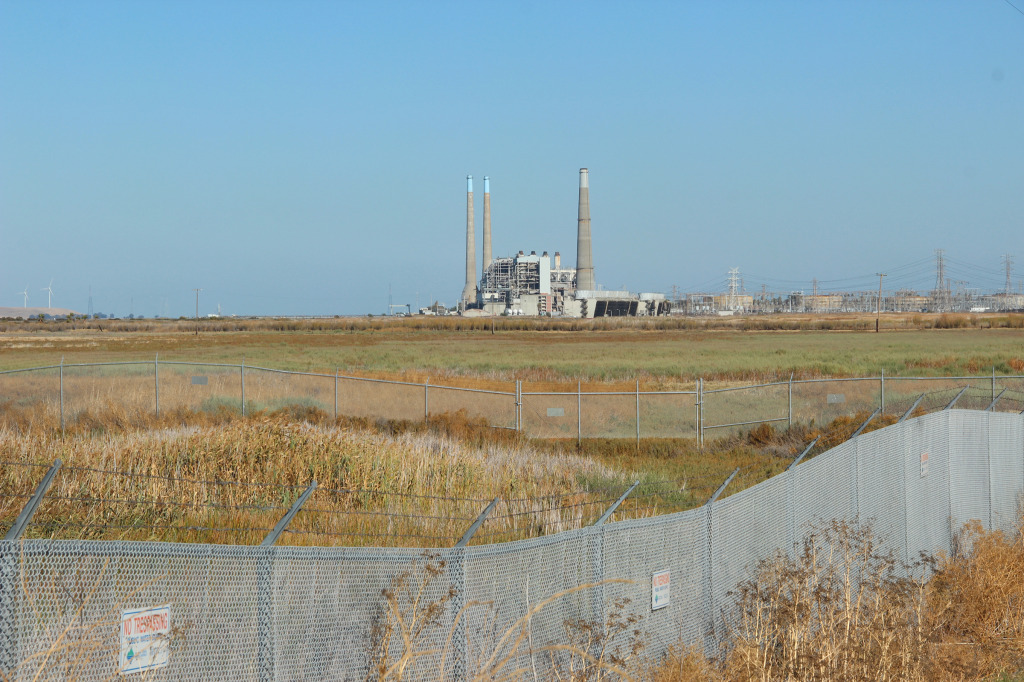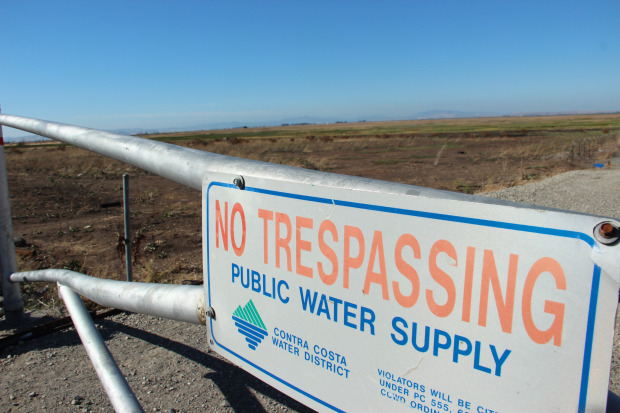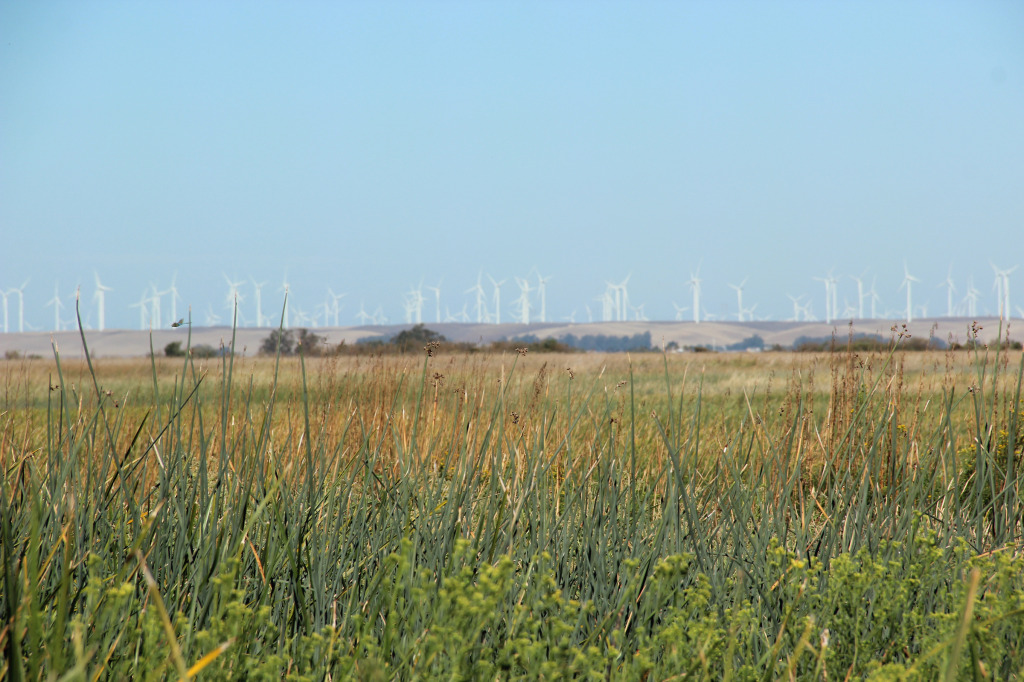Thirty miles east of Richmond, just beyond railroad tracks, sits a windswept field on the Sacramento/San Joaquin River Delta alive with darting ground squirrels and swaying cattails. This is Mallard Slough, a plot of marshland near Bay Point that holds more potential than its undeveloped landscape suggests.
As California’s persisting drought intensifies, Bay Area counties have been working together to find new sources of fresh water. One idea is desalination, the process of separating salt from brackish or ocean water to create drinking water. Desalination has grown in popularity among state and local bodies throughout the past decade, with 17 plants currently in the planning stages up and down California’s coastline.
Mallard Slough is one of them.
For more than 10 years, officials in Contra Costa, Alameda, San Francisco, and Santa Clara counties have been eyeing potential locations for a $200-million facility. Officials have studied other locations as well — one along Ocean Beach in San Francisco and another near the Bay Bridge in Oakland — but the inter-district prefeasibility studies that began in 2003 and continued into 2007 found Mallard Slough to be the only realistic site. If constructed, the facility would draw from Suisun Bay and could supply supplemental drinking water to East Bay Municipal Utilities District (EBMUD), which serves the city of Richmond as well as more than 1.2 million other water customers in the East Bay. The planning process will continue into 2015, when other details will be hashed out.

Feasibility studies carried out by Bay Area water districts between 2003-2007 determined that Mallard Slough could host a desalination plant. (Photo by Ted Andersen)
“We did not identify how much [water] would go here and how much could go there; we mainly looked at maximum output,” said Jeff Quimby, planning manager with the Contra Costa Water District. “If the project went forward we would need to look at who it would benefit.”
Bay Area water agencies have received about $3.3 million in state grants for technical studies so far, $1 million of which went to fund a small-scale pilot project operated at the slough’s pump station from 2008 to 2009. The testing was completed in June 2010, and concluded that desalination is possible at the location. The plant’s output could be as much as 50 million gallons of water per day.
Desalination is an expensive and energy intensive process, costing anywhere from $1,900 to $3,000 per acre foot to screen, but the low salt content of the water at Mallard Slough is part of what makes the area attractive. Seawater contains roughly 36 parts per million of dissolved salt compared to just 10 to 13 parts per million for the brackish water at the proposed location. The slough is a wetland area near the mouths of two of California’s most important rivers: the Sacramento and the San Joaquin.
“That obviously reduces how much we would have to desalinate it,” said Nelsy Rodriguez, an EBMUD spokeswoman.
Oct. 1 marked the beginning of the annual water year for state agencies, a time of intense review and forecasting. Eight agencies have moved forward to form the Bay Area Regional Reliability Partnership Development to investigate various types of water reliability projects, but decisions will still be made district by district. Moreover, while desalination is currently an approved option, the actual construction of a plant could be as far off as 2020. The fate of the project lies in the hands of the general managers of each of the eight water agencies now involved, according to Rodriguez.
“We hope by the beginning of the fiscal year, there will be [a timeline] for the project,” she said. “Each of the agencies is looking internally at the need for water reliability based on the drought.”
Funding also remains a gray area. Desalination is not included in Proposition 1, the $7-billion water bond on November’s ballot. Instead, individual agencies would need to look into ways to cobble the investment together before breaking ground.
“They might all have to contribute,” CCWD’s Quimby said. “That would be something we would have to consider down the road.”
Environmental impact is also a major issue facing desalination plants, especially in the sensitive delta habitat, said Heather Cooley, Water Program director at the Pacific Institute, a research center based in Oakland.
“There were some impacts on delta smelt and that’s a particular concern in that area,” she said, referring to a plant’s intake flow, which can suck up and kill marine life. “Looking at the technology, there are also issues associated with the discharge of brine.”
Passing costs to households is another issue, Cooley said. “For those struggling to pay bills, even a small increase could be a burden.”

The Secal Pittsburg Power Plant looms large to the east of the proposed desalination plant site at Mallard’s Slough. (Photo by Ted Andersen)
But as the October sun continues to beat down on Northern California, there is no rain in sight. For 100 years the utility has gotten its water from the Mokelumne River, in the Sierras. But the river has been heavily taxed during the past three years, which has contributed to EBMUD temporarily tapping the Sacramento River in May for the first time in 40 years.
Normally Shasta and Folsom reservoirs would be available for developing projects to meet growing water needs, but according to California Department of Water Resources data, Lake Shasta is currently at 25 percent of capacity with Folsom Lake at 35 percent. Every major reservoir in the state is below its historic level.
“California is perpetually in drought. It’s a drought climate,” Rodriguez said. “We are always looking for options to increase our water supply.”
Publish on Oct. 8, 2014 by Richmond Confidential
https://richmondconfidential.org/2014/10/08/as-drought-worsens-water-agencies-eye-desalination-to-quench-bay-areas-thirst/


No comments:
Post a Comment